ID.4 EV towing tests
Here’s what I learned last year about towing an RV trailer with a small EV
Welcome to the next part of my EV towing experiments. I’m covering much more in-depth later, but here’s a quick review of my testing last year on what you can expect while using an Electric Vehicle to tow a small trailer.
I’ll leave my practicality comments to the end, so please judge for yourself how well the EV and RV manufacturers are progressing with Electric Vehicles and RV trailers equipped for boondocking.
What did I test?
Current EV battery technology isn’t up to towing a huge wind dam behind the vehicle. So don’t think that any current (or near future) Electric Vehicle will tow your 5th wheel camper. But there is hope that with smaller aerodynamically shaped travel trailers you can enjoy camping on EV battery power alone. That’s why I selected two small travel trailers for this maiden voyage just to get a feel for the technology.
First Test: Safari Condo Alto towed by VW ID.4
First up is my loaner Safari Condo Alto trailer. This is Safari Condo’s new boondocking-equipped version with 400 watts of solar panels, 200 amp-hrs of Lithium battery and a 12-volt DC refrigerator. What makes this teardrop trailer so interesting for EV towing is the fact that the top clamshells down for towing (and you still have access to the interior). But when you’re camping, a push of the switch raises the roof to 6′ 6″ of interior height in a minute or so. This beautifully engineered trailer only weighs 1,800 lbs. and includes electric brakes (with an optional Bluetooth-connected controller) as well as traction motors for the wheels. They allow you to drive it around on a camping spot like a zero-turn lawnmower. No, it won’t drive on the highway with these motors. They have a top speed of maybe a hundred feet a minute.
Let’s look at the Alto numbers
Now, this is a very basic test over the same 20-mile loop on Interstate 70 in western Maryland. And I’ve only developed numbers at 55, 60 and 65 mph so far. But you can see from the chart that once you get over 60 mph wind resistance really kicks up and mileage suffers. Worst case was a 60% loss in towing mileage compared to driving the ID.4 alone at 65 to 70 mph. But still, it’s doable if you can limit your camping trips to 100 miles per leg, then recharge. More on charging options later in this article.
Second Test: MyPod XT by Xtreme Outdoors towed by VW ID.4
I also had a chance to do a quick towing test with the MyPod from Xtreme Outdoors. As you can see, it’s a much smaller pod-style trailer that weights around 800 lbs., compared to the 1,800 lb. Alto trailer. So I expected less of a mileage range loss.
Now, I really don’t think the extra 1,000 lbs. of weight has that much to do with the different mileage ranges, since once you’re on the highway it’s all about the wind resistance. The MyPod XT is no wider or taller than the ID.4, so it fits right within the slipstream. Still, there was bound to be some mileage losses, especially at 65 mph on the highway.
Let’s look at the MyPod numbers…
For the MyPod XT test I did a similar 30-mile loop on the highway at 55, 60 and 65 mph in western Pennsylvania. Here are the numbers. As you can see, by keeping the speed down to 55 mph it’s possible to squeeze a 200-mile range out of an ID.4 pulling a MyPod XT. So it’s a lot more practical to tow with an EV compared to the much larger Alto. But it’s still not the carefree 10-minute gas station stop every 300 miles we know so very well.
Also, it appears that going up and down hills isn’t as huge of a factor in mileage loss as one might think. That’s because the ID.4 (and all modern Electric Vehicles) use regenerative braking to recharge the batteries when slowing down or going down a grade. My very SWAGy (Scientific Wild A$$ Guess) estimate is maybe 80% of the energy used to climb a hill is put back into the battery. Sort of like an exhaust brake that uses electrons rather than gas compression to slow you down.
Charging station observations
While I could recharge my ID.4 from 10% to 90% range in under 45 minutes, there are some real challenges to towing a trailer with an EV that need to be addressed. The main one is a lack of pull-through charging stations in the U.S.
In fact, I’ve looked at dozens of charging stations from Electrify America, Tesla and ChargePoint, and not a single one of them offered a way to plug in an EV tow vehicle without disconnecting the trailer first. As you can see when looking at these, many of them have huge parking lots where it would be easy to create an EV/Trailer lane. But I never saw one anywhere. Hopefully that will change soon, as it’s a real pain to drop a trailer just to recharge an EV.
Secondly, all of these charging stations are in the direct sunlight. I think that a basic roof over top of the chargers would go a long way to making the person hanging around for 30 or 40 minutes more comfortable, especially in the summer. Plus, why not cover the roof with solar panels as well?
Plus, adding a small waiting area like a bus stop kiosk would be great, especially if it offered a cold drink dispenser along with free Wi-Fi. I find myself making business calls and checking emails while sitting in my car waiting for the batteries to charge.
Destination Chargers
When I visited Saint Michaels, MD, last year for a much-needed Crab Cake Sandwich at the Crab Claw, I did find several destination chargers at a number of businesses and parking lots. Instead of a 150 amp-hr Level-3 charger that could give you a 250-mile range boost in 45 minutes, these destination chargers were limited to 6kw or 7kw of power. So destination chargers can only add about 25 miles of driving range per hour of being plugged in. But since I was bumming around the town for 2 hours, it did add 50 miles to my ID.4 battery range, which easily allowed me to make the 125-mile drive home with plenty of reserve charge to spare.
When will EVs be practical for towing trailers?
While electric motors and digital speed controllers are now very good for EVs (perhaps better than 90% efficiency), battery recharging times and range are still issues. However, the price of Lithium cells is expected to drop to about 1/3 of current costs by 2030.
So I’m guessing that EV mileage range could double every 3 to 5 years, depending on how badly we want it. That suggests that the 275-mile range of a typical SUV EV like my loaner ID.4 could be 500 miles in the next several years, which would be a real game changer. Right now, the 275-mile range is more than enough for my wife, who typically drives less than 100 miles per week around town.
Where is all this electric power for EV charging coming from?
Well, that’s something I’m studying right now. And I’m snooping around for a few grants that would allow me to spend the hundreds of hours of research and testing needed for me to come up with anything more than a very wild guess.
However, I’m a huge believer in American ingenuity and engineering, going back to 3-phase hydroelectric power at Niagara Falls, Henry Ford and the Model T, and even putting the first man on the moon. If we can’t do it, then nobody can.
Let’s play safe out there….Mike



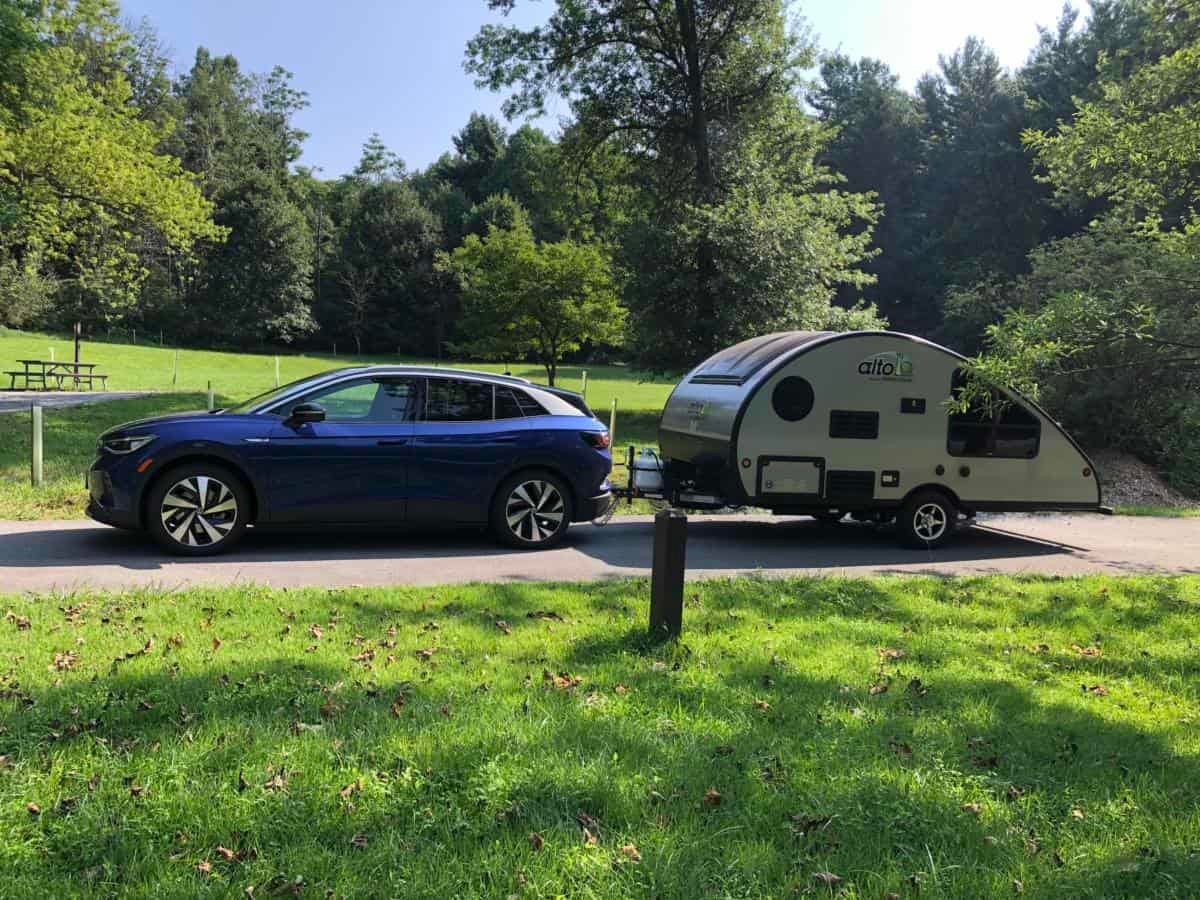
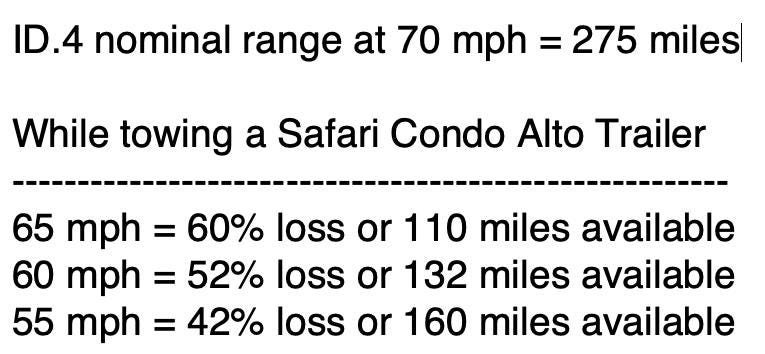
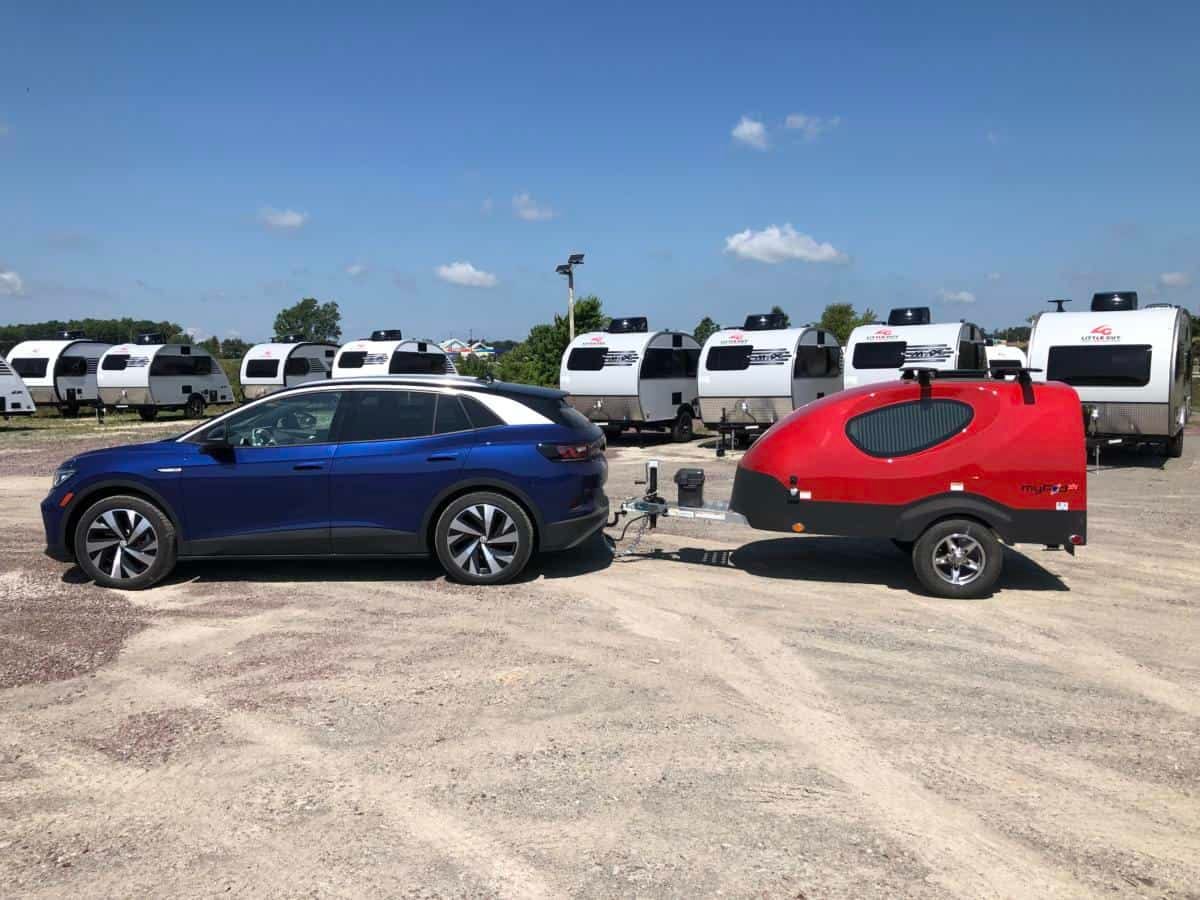
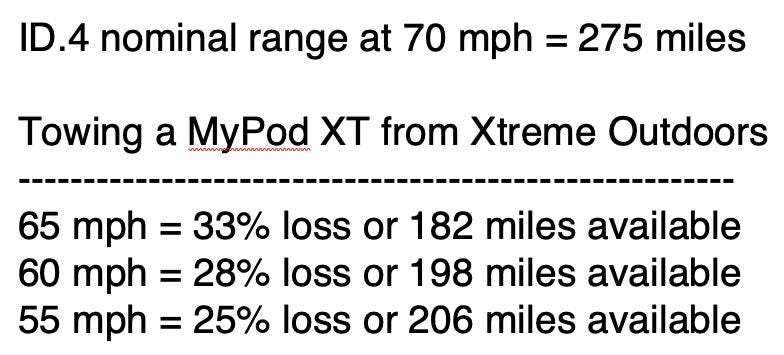
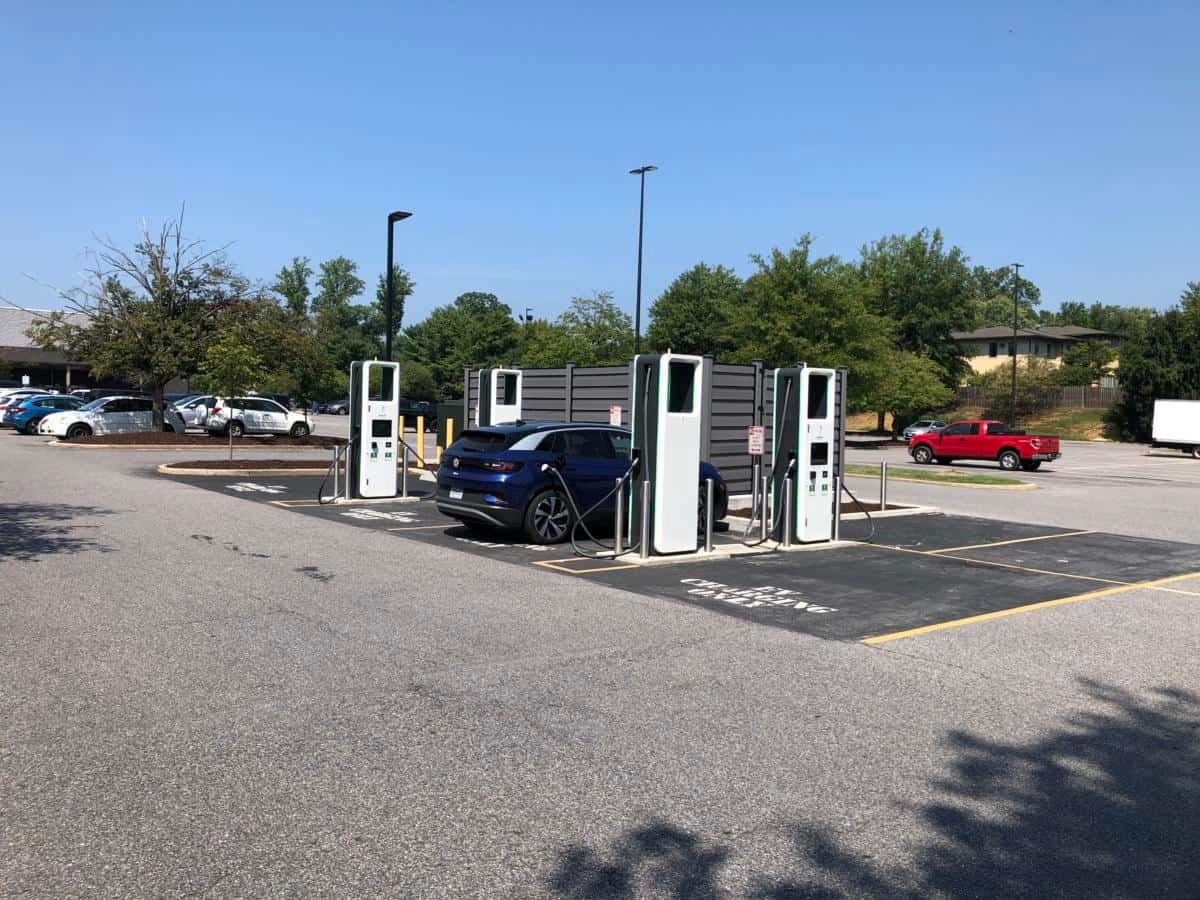

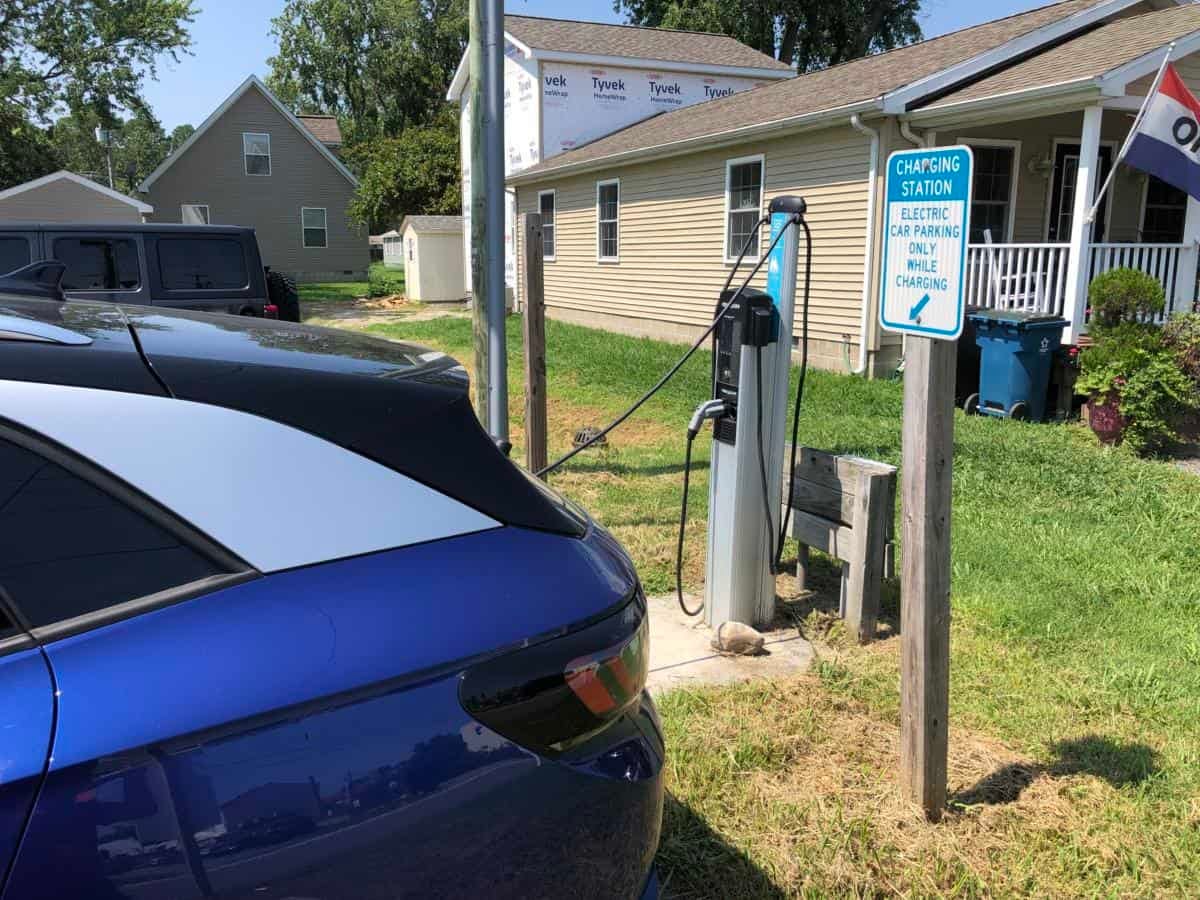

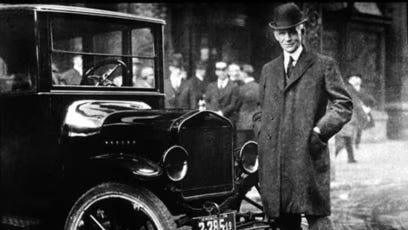

I never thought about charging while towing, at least not with a trailer attached. I still think we're being pushed into this EV stuff with no thought to where all this charging power will come from. We still have trouble keeping the lights on and air conditioners running in some parts of the country. I DID test drive a Tesla Model S many years ago and it was fun. Not enough fun to buy one though.
I met a family pulling a smallish Happier Camper trailer with a smallish Tesla at a campground on the outskirts of the San Francisco Bay Area. They told me they could pull their little trailer about 100 miles on a charge even while hauling a family of two adults and two kids. Surprisingly, from their home in the Bay Area, they had enough range to get to quite a few local campgrounds. Their M.O. was to AirBnB out their home and take the family camping until their guests left. They had quite a lucrative business going since they could charge their car with solar at their home and re-charge at the campground leaving them with a zero gas bill. This then allowed them to pocket the difference between the daily rates at the campground and their AirBnB! Also, a 2-3 night stay at the campground was plenty long enough to fully recharge their battery using using the 30A pedestal outlet. The ingenuity of this family was quite inspiring.